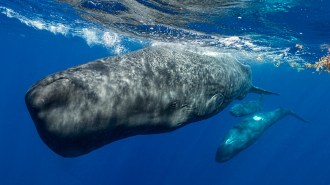Researchers worldwide are racing to develop low-cost wire with no electric resistance. Making it in practical lengths has been a tough challenge. A wire-making company has now demonstrated a process that yields potentially inexpensive, high-current wires about 10 times longer than previous prototypes.
For the past few years, electric utilities have been field-testing power cables and other equipment containing wires of so-called high-temperature superconductors (SN: 11/18/00, p. 330: http://www.sciencenews.org/20001118/bob1.asp).
Those materials lose all electric resistance at temperatures that are extremely cold yet much higher than the operating temperatures of ordinary superconductors.
Because the field-tested wires include silver, they’re pricey. As an alternative, researchers have been developing a ribbonlike wire of cheap nickel alloy coated with a veneer of high-temperature superconductor. Yet until recently, the developers couldn’t make such ribbons both longer than a meter and able to carry high currents.
Last month, American Superconductor of Westborough, Mass., with help from Oak Ridge (Tenn.) National Laboratory, produced the first 10-meter-long ribbons that can superconduct electricity at 100 amperes per centimeter of ribbon width.
Scientists achieved that sudden leap by fine-tuning chemical reactions in a prototype production line, says company president Gregory J. Yurek. The researchers still need to figure out how to make kilometer lengths of such ribbons that carry even higher currents, he says.
****************
If you have a comment on this article that you would like considered for publication in Science News, please send it to editors@sciencenews.org.





